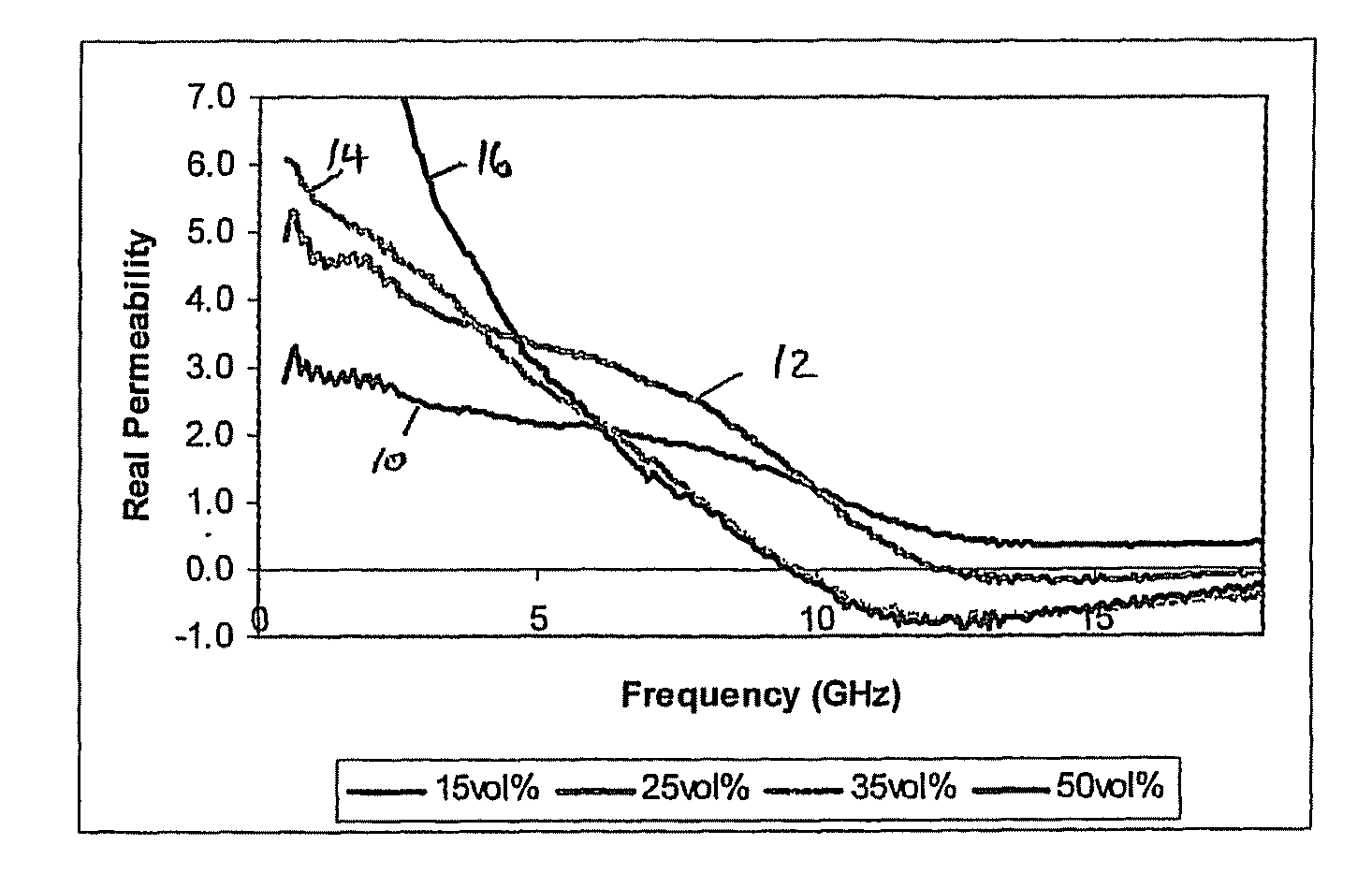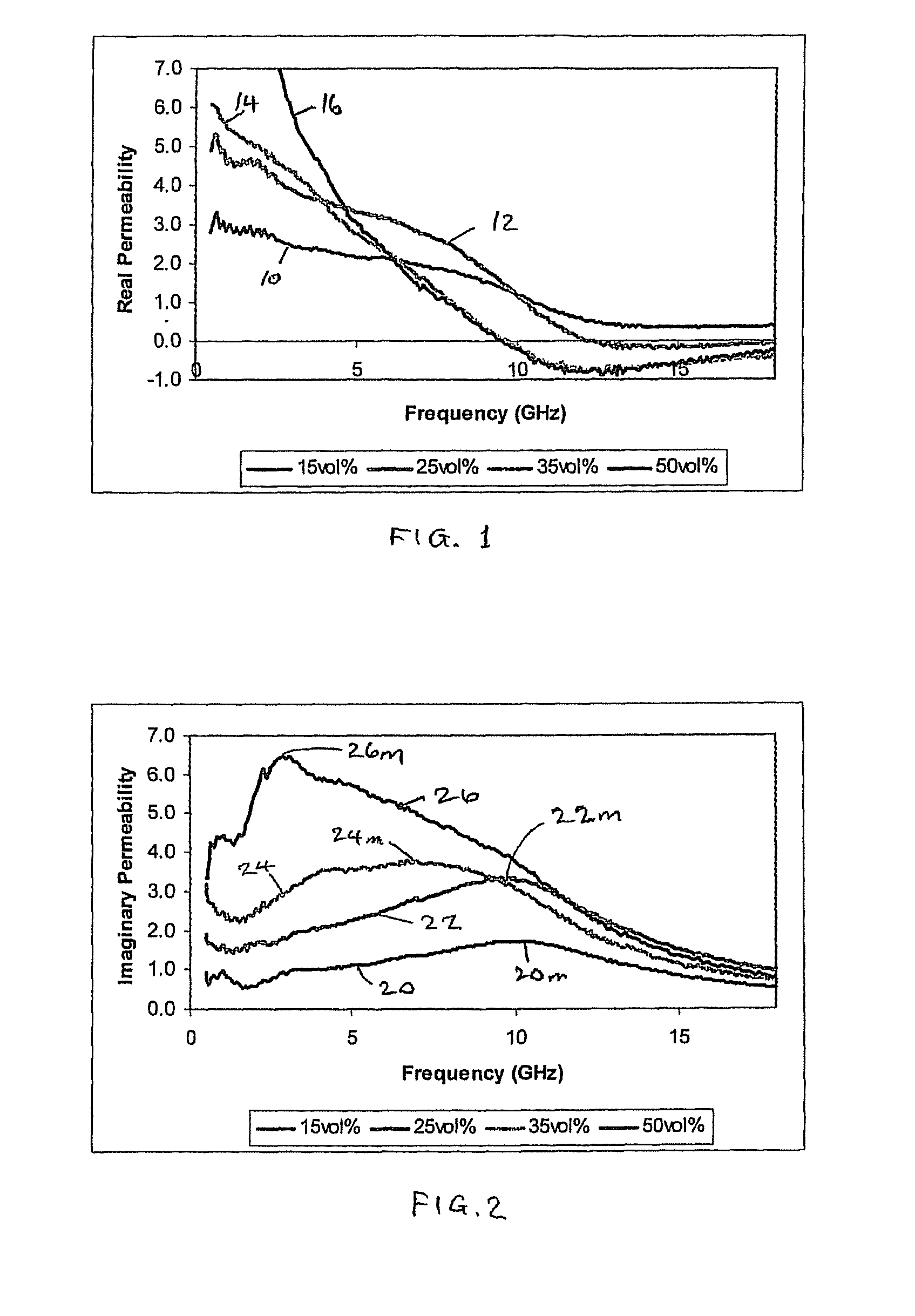Composite material
- Summary
- Abstract
- Description
- Claims
- Application Information
AI Technical Summary
Benefits of technology
Problems solved by technology
Method used
Image
Examples
Embodiment Construction
[0049]For the purposes of generating the results shown in FIGS. 1 to 4, four composite materials were produced which consisted of different volume percentages of magnetic flakes dispersed in paraffin wax, i.e. materials with 15 vol %, 25 vol %, 35 vol % and 50 vol % magnetic flakes respectively. For each composite material, appropriate quantities of its filler component material and paraffin wax host matrix were measured into containers. The filler was then dispersed in molten paraffin wax and stirred until solidification. The resulting composite was then die-pressed at room temperature at a pressure of 100 MPa for 30 seconds to produce a coaxial composite material for testing.
[0050]The magnetic flakes in the composite materials were reduced carbonyl iron flakes for which the website of the manufacturer (Eckart) quotes an average diameter of ˜50 μm and a thickness of ˜1 μm. Other magnetic flakes of different materials may also be used, although the frequency at which negative permea...
PUM
| Property | Measurement | Unit |
|---|---|---|
| Thickness | aaaaa | aaaaa |
| Thickness | aaaaa | aaaaa |
| Percent by volume | aaaaa | aaaaa |
Abstract
Description
Claims
Application Information
 Login to View More
Login to View More - R&D
- Intellectual Property
- Life Sciences
- Materials
- Tech Scout
- Unparalleled Data Quality
- Higher Quality Content
- 60% Fewer Hallucinations
Browse by: Latest US Patents, China's latest patents, Technical Efficacy Thesaurus, Application Domain, Technology Topic, Popular Technical Reports.
© 2025 PatSnap. All rights reserved.Legal|Privacy policy|Modern Slavery Act Transparency Statement|Sitemap|About US| Contact US: help@patsnap.com



